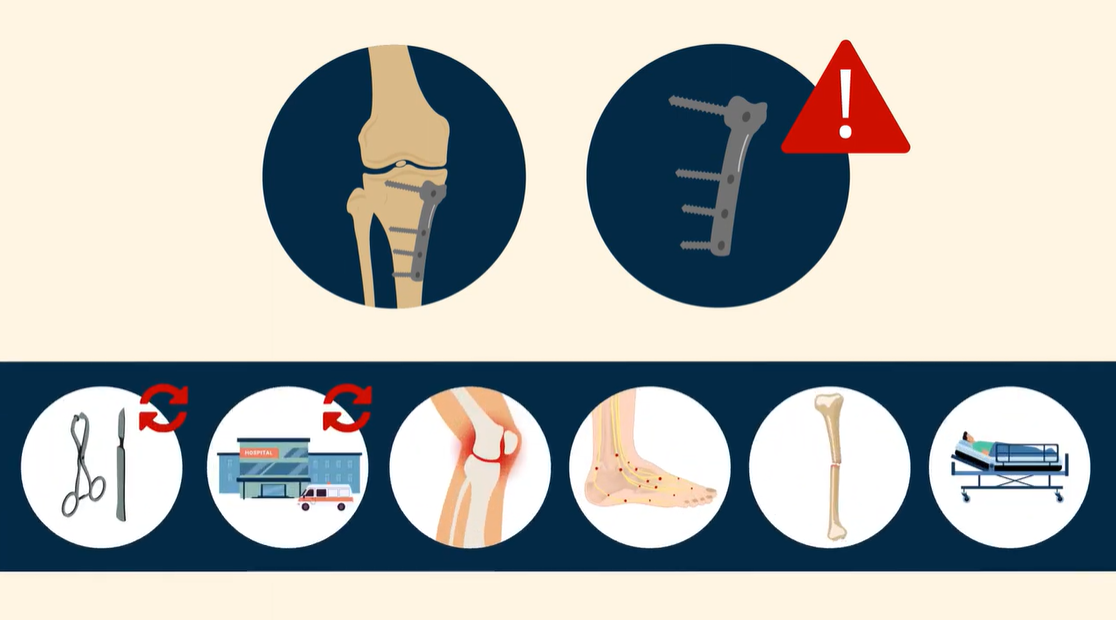The removal of metal fixation devices (hardware removal) is one of the 10 most frequently performed surgical procedures in orthopaedics. To the surgeon with limited experience, these procedures can appear to be straightforward and of limited complexity. However, issues such as osseous overgrowth, implants with threads stripped at the time of insertion, cold welding of screw-plate or locking bolt-rod interfaces, among other challenging scenarios, can all too frequently arise. These complications can lead to prolonged surgical times and increased deep dissection, which increase the risk of deep infection.
In the current issue of JBJS, Kellam et al. offer a comprehensive analysis of complications associated with hardware removal from their study using the American Board of Orthopaedic Surgery (ABOS) dataset. Obtaining de-identified case lists of all candidates who sat for the ABOS Part II Oral Examination from 2013 through 2019, they then evaluated the data regarding procedures only involving hardware removal (“HR-only procedures) as recorded by this cohort of surgeons relatively new to practice.
- Of the 609,150 cases during the study period, 13,089 were HR-only procedures (2.1%). The frequency of HR-only prodecures varied by subspecialty (highest for pediatrics and foot and ankle).
- Among the HR-only procedures, there was a complication rate of 9.6% (1,256 procedures).
- The most common complications were wound-healing problems (21.5% of patients with complications), followed by infection (16.4%). The third most common complication was postoperative continued or uncontrolled pain (12.4%). Other serious events included unexpected reoperations and readmissions, nerve injury, and bone fracture. Fifty-three patients had a life-threatening complication.
- The complication rate generally did not vary significantly by anatomical region.
The rates of complications related to wound-healing and infection are particularly cautionary. Preoperative planning must be comprehensive for these hardware-removal cases in order to reduce the risk of complications as much as possible. Consideration of how long an implant has been in place is particularly advisable, as issues creating difficulty (bone ingrowth into empty locking holes in intramedullary nails or cold welding of locking screws within plates, particularly with titanium implants) may increase substantively. All surgeons should be prepared with adequate resources including back-up removal devices and special “broken-screw removal sets” and consult with the most experienced surgeons in their practices in order to limit patient risk from fixation-device removal.
Read the full report here.
Click here to access the related Video Summary of this study.
Marc Swiontkowski, MD
JBJS Editor-in-Chief




Sage advice!! Never an easy case. Must have complete sets of screw removal instruments. Most facilities DO NOT have complete sets of these instruments!
My bf had hardware removed from hip after 30 years the next day his femur broke
There is a saying “You can only look bad on a hardware removal.”
As above, “you never look good taking out hardware or dealing with an infection.”
To add icing on the cake, 20680 reimburses extremely poorly. I believe seeing a new low back pain patient in the office may reimburse better( considering time and effort spent )and professionally more rewarding.
Especially for Peds Ortho’s. Don’t use titanium as you will always have trouble getting this out.
Synthes titanium plates are notorious for this requiring diamond burrs to remove the screw heads. What a mess.
Like they say ‘hardware removal is no way to make a living’
I always tell the patient “it can take several minutes or several hours.”